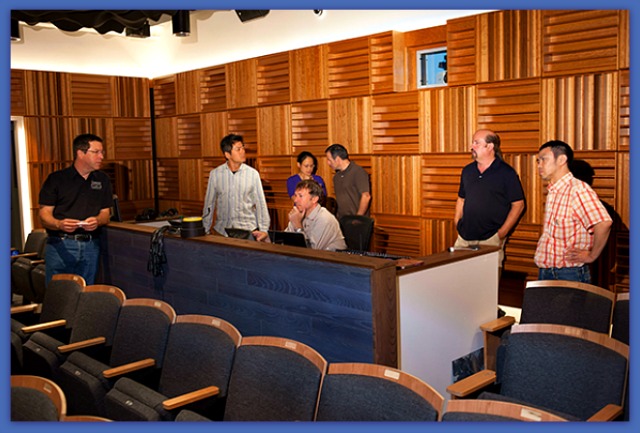NY-Based AVL Designs Inc. Deploys Yamaha AFC On Numerous Projects Over Several Years

Reprint from ProSoundWeb article April 23, 2020
Company principal/owner, Seth Waltz, reflects on the evolution and application of acoustic room conditioning technology on a range of projects.
Seth Waltz, a principal and owner of AVL Designs, a Penfield, NY-based firm specializing in A/V system design for performing arts, theater, worship, and several other applications, has worked closely with every version of Yamaha Active Field Control (AFC) acoustic room conditioning technology for more than 15 years.
He’s seen numerous changes in each of these applications, with traditionally high-end technologies being applied to smaller environments.
“Auditoriums with a few speakers and a microphone were once considered high-end A/V rooms,” he notes. “Now these same venues are being outfitted with million-dollar technology. The digital era has created a whole new mindset where a performing arts center, even at the school level, is looking for a higher level of everything: acoustics, sound quality, video quality and streaming. It’s all tied together.”
His first experience with AFC and its ability to configure and condition a space came in 2004 when he and his associate Geoff Nichols were invited by Yamaha to a system demo.
“We walked into what looked like a large office space with drop ceilings,” he explains. “A pianist backed by a string quartet performed for us with AFC applied to the room. If you closed your eyes, you would swear you were in a 500-seat theater. It sounded extremely natural. We got to play around with the system and we soon realized this is the future of room acoustics as far as having the ability to modify a facility as needed.”
AVL Designs Inc. first implemented the AFC system on a design project in 2005, turning a “plain Jane auditorium” into what sounded like a completely different sonic environment and drawing rave reviews from the project owner as well as the musicians who performed there.
Waltz points out that AFC technology has improved greatly over time, especially in terms of its processing and responsiveness. He’s also suggested new system developments such as an “orchestra shell”, allowing him to configure the stage as opposed to just the seating areas.
“With most of our jobs now, we’re simulating the performance of orchestra shells as well as covering the seating area and early reflections,” he says. “Now that the processors have become so powerful there’s no limit to what type of space AFC can fit. We don’t have to even think twice about metallic edging or other factors. It sounds so smooth that nobody seems to know it’s there.”
Waltz noted the only challenge to a successful AFC installation is a room with a high degree of mechanical noise, more common on projects that are updates to an existing space.
“You can’t have background noise or anything that creates echoes,” he said. “You won’t hear the nuances of the reverberation. Plus, the microphones pick up the noise and cycle it back through the system.”
Waltz looks forward to future versions of AFC incorporating new features and capabilities suited to a diverse range of applications. These include using the system as an effects device or controlling it via a mobile device. AFC4 can be controlled using the Yamaha ProVisionaire Control app on a PC or Windows tablet as well as ProVisionaire touch for iPad. These two software tools allow customers to create customer user interfaces to control various Yamaha equipment to simplify system operation for non-audio professionals.
Whatever changes are ahead for Active Field Control, Waltz is already confident in the technology’s ability to handle any project challenge. “Often at the tail end of a bid, someone changes the seating and suddenly the space is absorbing a sound we didn’t expect,” he concludes. “Or, something may happen during construction where you end up with different frequencies or there’s some other problem you wish you could do something about. AFC fills in the holes and helps compensate for these factors.
I tell clients, ‘I can give you one room that does one thing really well, or I can give you a room that does several different things well.’ Accomplishing this with physical construction alone is limiting, but AFC is extremely flexible and able to make one room do the job of many. It’s such a great tool.”
